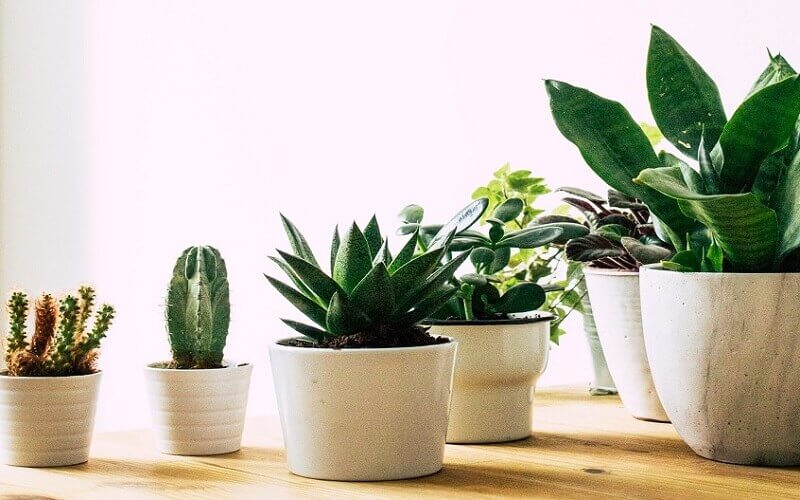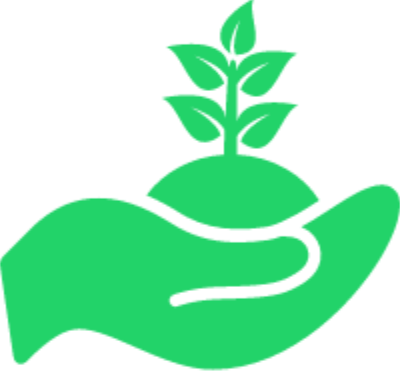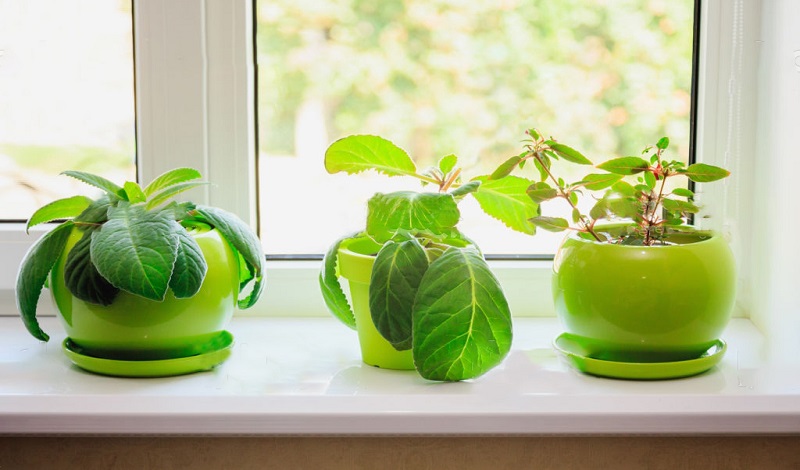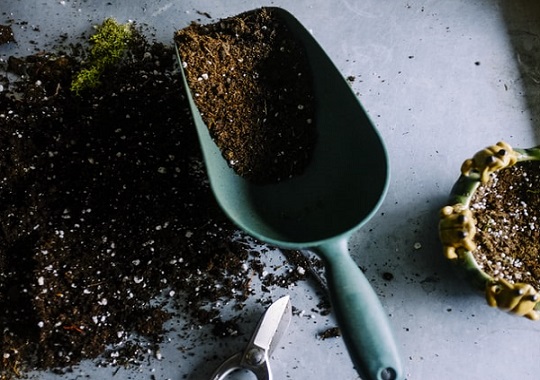This post was last updated on July 31st, 2021 at 05:50 pm
You might think that gardening in an apartment without a balcony is an impossible task, right?
You probably have big dreams of having the perfect vegetable garden, but it seems like there’s no way to accomplish that goal. Well, we have good news for you. It’s actually quite possible to grow your favorite vegetables and herbs in your apartment. Even there’s no real need for a balcony or yard to start your garden; all that you need are a few key things to make your plants grow strong, healthy, and for them to thrive.
Growing something like Veg or Herbs in an apartment is not complex or expensive. Just remember three important things:
- Soil
- Light
- Seed
So let’s see the whole procedure as stated below:
1. Decide what to grow
First, and foremost, you must decide what vegetables or herbs that you want to grow. These vegetables have proven successful to grow inside apartment:
- Tomatoes
- Carrots
- Green Onions
- Leafy Salad Greens
- Potatoes
- Radishes
- Hot Peppers
However, if you have more grand dreams for your garden, there is a much wider variety of uncommon vegetables and herbs. Some of the best varieties of Herb to grow are:
- Coriander of Cilantro
- Mint
- Lemon Balm
- Parsley
- Basil
- Chives
- Thyme.
Actionable takeaway: Decide what type of vegetables and herbs you want to grow.
2. Choose Containers/Pots
Next you’ll need to either buy containers or pots for your plants, or you can just make them with stuff laying around your house!
But obviously, containers are a must, whether you buy them or create them yourself. You can make your containers with just about anything in your house that can hold your soil and water. Some examples are empty yogurt containers, a gallon jug, a bucket, even an empty water bottle– you name it. The only thing is that the container needs to be able to properly drain water from the soil.
If the water can’t drain from your plant, it will drown and never be able to grow properly. Cut holes in the bottom of your container if they’re not already there. They shouldn’t be so big that the soil will fall out, but just big enough for the extra water to drain out.
If you bought a container or a pot, there should already be drain holes- but it never hurts to check. If you’re reusing containers from previous plants, be sure to clean them out thoroughly to be sure there are no harmful chemicals or bacteria inside.
Actionable takeaway: Collect containers/pots. Clean it & make sure about draining water from the soil.

| Related Article: Top 10 Best Garden Planters 2021– [Reviews & Buying Guide] |
3. Place the Containers in right spot
Third, you’ll have to pick a spot to start growing your vegetables and herbs.
In the early stage of your plant’s life when it’s still just a seed, the need for heat is far more important than them getting a large supply of light.
Your plant will not need very much light until they start to grow and become seedlings, and begin to poke out of the soil. Try to find somewhere without a draft, because growing your plant in a breezy or drafty place will make it difficult to keep them warm.
You can either put your plant where they receive sunlight from a well-lit window, under an artificial light, or you can use both!
However, it is much better for indoor plants to be grown using artificial lighting than it is to depend on the sun itself. This fact should benefit most people who are gardening in an apartment without a balcony, though, since not every apartment is built the same and some of them will lack a good source of light from windows.
Indoor vegetable gardening can be a very fun thing to do, and as you see your plants come to life you will find yourself feeling proud that you grew these vegetables all on your own. So, let’s jump into the next step.
Actionable takeaway: Containers/Pots should be place on under direct sunlight, otherwise you have to use artificial lights.
4. Measure the Soil
Next, you’ll start getting into the fun part where you can really begin to embrace your inner gardener.
Now you’ll need to start getting your soil ready. Depending on what it is you’re growing, the amount of soil and depth that you need for the seed will vary.
If you’re growing something that is not listed later in this article, you can easily read the package that your seeds came in or just google whatever you need to know for your specific plant.
Once you know the requirements for your vegetables or herbs, it’s time to start planting the seeds! Be sure that you are planting in the right season. Though, Some plants don’t do well in certain seasons, so if you want the right outcome from your plants be sure to check out the right time of year to plant them.
Believe it or not, it’s actually easier to get soil ready for indoor vegetable gardening than it is doing it outdoors since there is less space involved, and you can control all of the variables that go into supplying for your plant. You will want to use either sterile potting mix or seed starting mix straight from the bag with nothing added to prepare your pot for planting. Another option for you is to add quality bagged compost with regular soil.
Once again, you should be able to find advice on what time of year you should plant your seeds on their package. When in doubt, though, just ask someone who has experience with indoor gardening for advice on when you should plant.
5. Water Carefully
One of the biggest mistakes made by rookie gardeners is how much and how often they water their plants. In order to succeed with your gardening mission, you need to watch how you water them very closely.
Just like with outdoor gardening, watering too much or too little can be harmful to your plant. They will either drown if watered too much, or die if not watered enough. Either way, if not watered correctly then all of your hard work is for nothing and you have to start from scratch again.
That’s why the drains in the bottom of your container are so important; if you do accidentally over water your plant, it can still drain out most of the excess water from the bottom of the pot.
As a guide to how your soil should feel, stick your finger in the pot- but be careful not to break any roots or move your seeds- and if it feels about like a sponge that has just enough water to keep it wet while not being soaked down, you’re doing good. Your soil should feel like a sponge that has just enough water in it to keep it wet, but not drenched.
Relevant article: What is the Best Watering System for my Vegetable Garden?
6. Light is must for indoor gardening
Now we’re at the final step to starting indoor vegetable garden. It’s time for Lights, Camera, Action. Growing vegetables indoors with lights is crucial to keep them healthy and alive. As mentioned before, it is perfectly okay to use both sunlight and an artificial light to keep your plants healthy.
Even if your plant is receiving sunlight, it will still only benefit if it also receives some artificial light as well. Still, artificial lights take the cake for the best light to provide for your plant since you get the full spectrum of light from them.
The artificial light should be placed at about 6 inches above the plants so that they can receive its light while also not being drowned in it. You can either lower your containers or raise the lights higher as your plant starts to grow and become taller.
What You Can Grow
Vegetables
- Carrots: They don’t take up much space; however, you will need a deeper pot since they grow deeper than other vegetables and herbs. They need at least 12 hours of light a day and should be kept at about 60 degrees Fahrenheit.
- Green onions don’t take much sunlight. You can either buy seeds and start from scratch with this vegetable or use the root ends of another green onion once you’ve used the top of the vegetable.
- Peppers can be grown indoors, but they need between 14 to 20 hours of light per day. Keep that it mind before deciding if this is the right vegetable for your indoor garden. They should be kept at around 70 degrees Fahrenheit. Their pot should be, at the minimum, 8 inches deep. Allow the soil to dry between the times that you water the peppers.
- Potatoes, one of the world’s favorite veggies, can be grown inside too. You can grow sweet or regular potatoes, whichever you like best. Take a sprouted potato and cut it up into chunks, and lay them sprout side up with at least four inches of soil underneath them in their container. Then, add four more inches of soil on top once the sprouted potato chunks are played out. It takes approximately two months for the potatoes to grow. Add soil as needed if they grow too large to be covered, and keep in mind that they can grow to be large.
- Tomatoes are a plant that we aren’t all quite sure if it’s to be considered a fruit or a vegetable; but since we use not in everyday life as a vegetable, it’s made its way onto this list. They require 14 to 20 hours of light per day like the peppers we mentioned above, since they love the warm weather, but if you’re willing to leave your lights on for this amount of time it will be worth your while once they start to grow. Smaller varieties are a better choice for indoor growing.
Herbs
- You can grow lemon balm indoors on the fall, grow it throughout winter, and if you’d like you can put it outside in the spring and summer.
- You can grow chives indoors as well. When harvesting, do it at the base-as if you were cutting grass. Don’t harvest more than one third of it at a time.
- Parsley can be grown indoors, but you need to crack its seed coat before sowing it. You can do this by soaking it in warm water.
- Grow basil inside your apartment, too. Though you should only plant the smaller globe types indoors. The bigger types of basil will take up too much space in your apartment, causing you inconvenience.
- Your favorite spice to put in your food can be grown in your apartment, too. That’s right. You can plant and grow Coriander or Cilantro indoors. However, it tends to have a shirt life span. This isn’t due to it being indoors, it’s just simply how cilantro is. Plant every two to three weeks of you want to keep some cilantro handy at all times.
- Thyme can be grown in pots that are as small as four inches indoors! Use a nursery plant or part of a thyme plant that has been growing outdoors to plant this herb.
The Best Herb to Grow in Apartment
Putting vegetables aside in the cutting board for now, as far as growing herbs indoors is concerned mint has to be the best choice. Even if you do have an outdoor garden, we would still recommend that you grow it inside since it’s so much easier to control it indoors than it is outdoors. Also, you’re not limited to just one single type of herb with this choice; you can grow any and all of the different mints that you want! This herb is convenient and comes in a large variety.
Common Obstacles of Indoor Apartment Gardening
- When gardening indoors, you may find yourself running into obstacles such as plants not getting enough humidity and experiencing difficulties when using fertilizers to speed up your plant growth. Your plants may also be growing poorly when they’re close together.
- Most plants must have some kind of humidity to survive; whether they’re being grown indoors or they’re being grown outdoors is irrelevant. Having humidity in the air helps your plant make the water that you give it evaporate, and it also uses it to pull nutrients from its soil. When there is a lack of humidity, the plant can not successfully do what it needs to do to survive. You can solve this by spraying it’s leaves with a mist bottle, or even keeping humidifier nearby for your plant. Find out how much humidity it needs and use a Hygrometer to make sure that the room’s humidity is correct.
- There is also such thing as using too much fertilizer in your plant’s soil. When you give your plant too much fertilizer, it will grow much faster than it was before. However, don’t let what you see on the surface fool you. Your plant is actually struggling beneath the surface. Too much fertilizer creates a very high salt content in your soil, and as the plant grows it also becomes difficult for it to consume the nutrients that it needs because its roots are not growing as fast as the rest of the plant.
- Another common problem experienced by indoor gardeners is that their plants don’t seem to grow right when they’re planted close together. This happens for a similar reason to why they don’t grow right when you over fertilize them; they have to fight to get their nutrients. When you have multiple plants bunched together in one space they’ll all be trying to pull nutrients from one source alone. There won’t be enough to go around, so they’ll never be able to thrive as they should.
How to Water, Feed, and Harvest Your Apartment Garden
Water very good two to three times per week instead of briefly watering each day. When your plant is watered deeply, it helps the roots grow further and stronger since it makes the soil moist- which you want, like mentioned before.
Feeding your plants is a pretty simplistic thing to do. All that you really have to do is add fertilizer once you can see two leaves sprouting from your seedling. It is crucial that you do this no sooner than when you see these leaves, since nitrogen can be very harmful to them otherwise.
When harvesting, make sure that vegetables are ripe before harvesting. When they are harvested as soon as they become right, your plant is likely to produce even more than it did before.
Bigger is not always better.
Usually, believe it or not, vegetables are much more flavorful when they are still in their smaller stages rather than the larger stage. Keep your seed packet and look at it to get a general idea of when it will be time to harvest your specific vegetable or herb. Your packet should also give you an idea of what to look for to be sure if your produce is ready for harvest yet.
For herbs, pinch and cut them back often so that they keep creating even more leaves and stems. This is what you want, because with herbs that’s what you’ll be harvesting- the leaves and stems. For herbs that you want to dry out once you have harvested them before eating, you can out them in a paper bag and let them sit. They’ll dry out after a while.
Additional Tips
- Instead of actually watering a new seed, you can use a mist bottle to get the soil moist so that it can grow. This keeps soil moist without drowning out the seed.
- Gardeners often keep lights for their plants on chains so that they can be easily adjusted as the plant grows, keeping it at a healthy six inches above the plant.
- To increase results for your plant, you can put aluminum foil or whiteboard around the pot that your plant is in, on the surface. This reflects the light from the bulb, to the foil or whiteboard, and back onto your plant, maximizing your results.
- If you plan on moving plants to a forever home outdoors one day, they will not deal with it well if they are planted to soon in the year or season. If you start late, they will not grow properly on the right time schedule. Also, don’t move them outside too soon or else they will potentially end up dying because of the cold soil. Research your plant’s needs before replanting it outdoors.




A lot of information about apartment gardening, indoor gardening and so on. Thanks a lot.
You are most welcome, stay connected..